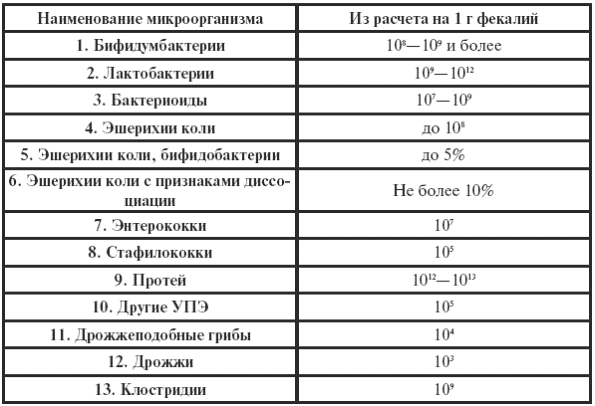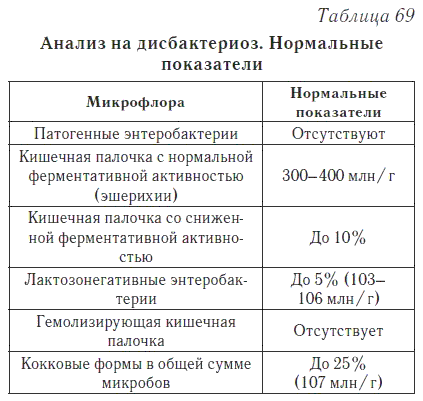Dysbacteriosis in infants is a phenomenon encountered by up to 95% of children under the age of one year. Weakened, premature and often ill babies are especially prone to this ailment. What is dysbiosis and what is it dangerous?
Why is this happening? Let's figure it out in order.

Breast dysbiosis
[sc: rsa]
Until the moment of birth, the baby is in a completely sterile environment, its gastrointestinal tract does not contain any bacteria or microorganisms. At the time of birth, moving along the birth canal, the baby first "gets acquainted" with the mother's natural microflora, which normally contains lactobacillus and bifidobacteria and E. coli. Later, when breastfeeding, hugs and kisses, the baby encounters various bacteria that are on the skin and in the mouth of the mother. Thus, colonization of the gastrointestinal tract of the baby by normal (healthy) microflora occurs.
Ideally, in babies who are completely breastfed, the intestinal microflora consists of 95-99% of lactobacilli and bifidobacteria (the so-called probiotics). And only an insignificant part is made up of “neutral” (obligate) bacteria, which have neither harmful nor beneficial effects on the baby’s body. These include streptococci, enterococci, micrococci, clostridia, bacteroids and Escherichia coli.
In the event of adverse factors (forced antibiotic intake by the mother or infant (also read: how to recover a child after antibiotics), later the first application to the breast, lack of breastfeeding) the balance of intestinal microflora can be impaired and lead to adverse consequences for a fragile body.
Symptoms and signs of dysbiosis
Signs and main symptoms suggesting that the infant may have an imbalance in the intestinal flora:
- bloating;
- flatulence;
- frequent abdominal pain;
- bad breath;
- increased salivation;
- dry skin;
- manifestations of allergic dermatitis;
- thrushstomatitis on the mucous membranes;
- constipation;
- diarrhea for more than 2-3 days;
- vomiting
- decreased (lack) of appetite;
- the child is poorly gaining (or not gaining at all) weight (article about it);
- a large amount of green mucus and foam, bloody streaks in the stool.
It is worth making a reservation and recall that for infants, the chair is normally yellow, similar in texture and smell to sour cream. However, a small amount of mucus and foam is not considered something abnormal. A stool for babies receiving complementary foods may contain undigested pieces of food.
We also read:
The reasons
The causes of dysbiosis in infants can be the following factors:
- violation of maternal health in the peritoneal period of fetal development;
- birth pathologies;
- prolonged stay in the hospital;
- infections of various origin (respiratory viral, intestinal, pustular);
- physiological immaturity of intestinal motor function;
- dyspeptic disorders in the digestive tract (vomiting, regurgitation, constipation, malabsorption and intestinal dysfunction);
- primary immunodeficiency;
- late attachment to the chest;
- lack of breastfeeding or early transfer of a child to artificial milk formulas;
- forced use of hormonal and anti-inflammatory drugs;
- taking antibiotics;
- operations;
- the constant stay of the baby in stressful and adverse social conditions, a change in the neuropsychiatric status of the child;
- pathological phenomena of anemia, malnutrition, rickets, allergic dermatitis and others.
Dysbiosis tests


If there are several of the above symptoms, the doctor will suspect the development of dysbacteriosis in the crumbs and suggest a laboratory study.
Tests for dysbiosis in infants include the following types of studies:
- coprogram - a diagnosis that reveals the degree of digestion of food components by the intestines, as well as signs of inflammation (or their absence);
- sowing feces for opportunistic flora - a study that reveals the percentage of obligate bacteria (excluding quantitative indicators of healthy microflora);
- sowing feces for dysbiosis - an analysis that reveals the ratio of normal and conditionally pathogenic flora and its resistance (sensitivity) to antibiotics.
When collecting tests, it should be remembered that feces (minimum 5-10 g) are collected in a clean glass jar and given up freshly collected. Long-term storage at room temperature is not permissible. If a child takes probiotics, then they must be canceled before taking the test.
Treatment

If the doctor has diagnosed "intestinal dysbiosis", then a comprehensive enough long-term treatment will be required.
At the first stage, bacteriophages are appointed - the so-called "tamed" viruses. Their action is aimed at the destruction of pathogenic and conditionally pathogenic flora (while they do not affect beneficial bacteria). In parallel with intestinal antiseptics, sorbents are prescribed (for the quickest removal of toxins from the body) and enzymes (to help the digestive system).
At the second stage, the intestines should be colonized with “good” microflora (lacto- and bifodobacteria). For this, special drugs are prescribed.
Additionally, the pediatrician can prescribe a mixture containing lactobacilli to the baby -articles. It is not recommended to give a child such mixtures without a doctor's prescription. It will be relevant to include in sufficient quantities in the diet of babies receiving complementary foods, dairy products.
Naturally fed babies are less prone to dysbacteriosis compared to “artificers”.
Therefore, breastfeeding (at least until the age of one year) is the best prevention of dysbiosis. Breast milk contains antibodies against E. coli, rotavirus, cholera vibrio, Shigella, Salmonella and Giardia, as well as bifidus factor - a substance that promotes the growth of normal microflora. In this case, nursing mothers need to adhere to a proper and balanced diet.
We read on the topic of breastfeeding:
[sc: rsa]









Hello! My son is 4 months old. He has a green chair, there is diarrhea, and yesterday it was straight dark green. Doctors do not prescribe anything. We 3 weeks on artificial feeding, I give applesauce but rarely.
I have a second child, both breast-fed, while feeding, tried not to use any antibiotics, probably this is what saved my babies from dysbiosis.
So sorry for these children, the girlfriend had this problem with the baby, she stopped breastfeeding at 3 months and the torment began, although he ate plenty, but had to endure a couple of months ...
My sister's daughter, up to 1.5 years old, had dysbiosis, almost from birth. After a caesarean section, the sister received an antibiotic and at that time she was already breastfeeding, which caused long-term intestinal dysbiosis. The feces were tested for coprograms, feces for dysbiosis (showed a large number of protea and E. coli twice as normal). The baby’s stomach ached constantly, the stool was liquid, foamy, green and very offensive. Gave lineks, enterozhermina, on these drugs brought the child out of dysbacteriosis only by one and a half years.
I was only breastfeeding, I started giving complementary foods after 6 months, which may be why the problem of dysbiosis was not familiar to us! It’s a pity the little children who suffer with this problem
Thank you for the article
From the moment a child is born, all parents every day follow how they slept, how they ate, how they went under themselves, I also constantly expected all sorts of troubles. Many in the comments tell how children cry with dysbiosis, tried to follow a diet and not take medicine to feed breast milk without fear. About five and a half months later, they began to add complementary foods, then the yolk grated, then a spoonful of porridge, and I noticed that the baby did not start to empty every day, woke up anxiously at night, was capricious, although it didn’t hurt anything. First I had to take probiotics myself, and then I found out that even for such babies there are probiotic starter cultures, I ordered Bifidum from the Bakzdrav company, a lot of positive reviews. I thought that the results were exaggerated, but gradually over the course of a month I noticed that the baby began to eat actively with appetite, calmly empty himself and stopped waking up at night, only eat once, and then in a dream he reflexively applied to his chest.I am very pleased with this result, of course I will continue to give Bifidum, it is very useful and really effective.
I’ll share our story here - it’s possible that someone will find it useful. Our treatment is somewhat different from what is described in this article, you can’t even call it a treatment, because we did not take any medications. The son had problems with his stomach a few weeks after birth. The pediatricians said that it was dysbiosis and urgently needed to be treated, prescribed a mountain of tablets and all kinds of procedures. Without thinking twice, my husband and I decided to turn away from such appointments and took up the search for information on this topic. I will not describe everything in detail - anyone who is interested will find it themselves. I will describe what we did in the end. First, they began to regularly do exercises with their son - in the morning and in the evening. And throughout the day, I still arranged with him empty-handed lying - skin to skin, tummy to tummy. Well and the second - at first she began to eat a probiotic sour milk. I’ve been preparing kefir for many years, so the need for special yogurts didn’t scare me at all - I bought ferment from Bakzdrav and on. I immediately chose Protect, now the others have already tried - each one is good in its own way. The only thing that makes everything ferment well is to use a yogurt maker or a slow cooker (I have the latter). As a result, for two months of such simple actions, we generally forgot about the problems with the chair and the gaziki. A lot depends on how well the mother eats. Now we are starting to introduce little by little the yogurt from Bifidum diluted with water into the diet - it seems like it.
Prebiotics contain indigestible substances that have a beneficial effect on the growth of healthy microflora, and activate it. These include lactulose, oligosaccharides, fiber.
We treated with Enterosgel, it can be from the first days. Gave between meals about a week and everything worked out. The doctor said that he normalizes the intestinal flora well.